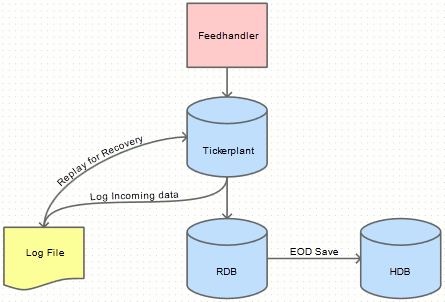QStudio
Query kdb+ Servers and Chart Results.
At the end of our Online kdb+ Training Course we recommend to trainees that they take data that interests them and create a database using what they have learnt. The purpose of this article is to outline the major components that could be used to make a bitcoin trading system based upon kdb+ tick.
Tutorial by Tutorial we will expand the functionality provided by our system. This outline article is to show the tasks involved, what areas of kdb knowledge are used in each and to give guidance. As such it will contain links throughout to the relevant training section in case you get stuck.
Kdb+Tick is a standardised architecture by kx for storing, analysising and retrieving tick data. The product provides a framework for subscribing to data, distributing the data to your C++/Java processes and storing it efficiently long term. We are going to use this recommended architecture as the basis for our system.

The major components of our market data system will be:
The recommended steps to getting a simple system up and running are:
The list above contains links to some relevant articles, that will be extended further in future. A number of hints are also given below.
If you are enrolled on our online training course please contact us with any questions, we are always happy to help, full source code is available.
If you have little kdb+ experience or training I recommend skipping writing a feedhandler, leaving out the tickerplant and using only a "fake" RDB database that you can populate with some random data for today. This allows skipping writing a feedhandler and dealing with tickerplants.
Query kdb+ Servers and Chart Results.